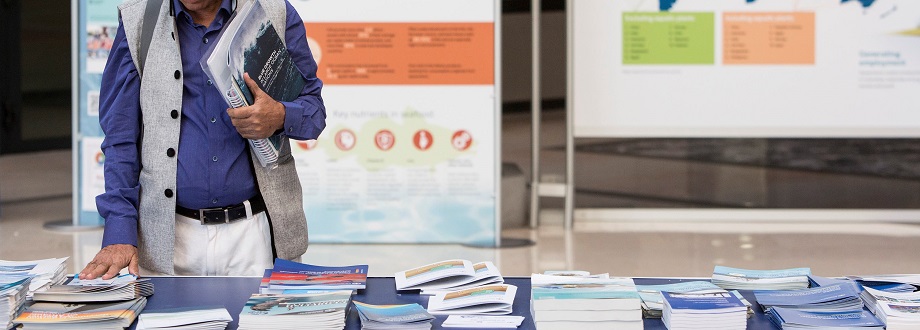Publications
Category: Common Oceans
Type of document: Project documents
Concept Note for the GEF-7 Child Project on "Deep-sea Fisheries under the Ecosystem Approach" (the DSF Project).
Category: Common Oceans
Type of document: Project documents
Concept Note for the GEF-7 Child Project on "Building and Enhancing Sectoral and Cross-Sectoral Capacity to Support Sustainable Resource Use and Biodiversity Conservation in Marine Areas Beyond National Jurisdiction" (the Cross-Sectoral Project).
Category: Common Oceans
Type of document: Project documents
Concept Note for the GEF-7 Child Project on " Strengthening the Stewardship of an Economically and Biologically Significant High Seas Area – the Sargasso Sea" (the Sargasso Sea Project).
GEF-7 CHILD PROJECT CONCEPT NOTE – Global Coordination for the Common Oceans ABNJ Program
16 July 2021
16 July 2021
Category: Common Oceans
Type of document: Project documents
Concept Note for the GEF-7 Child Project on "Global Coordination for the Common Oceans ABNJ Program" (the Global Coordination Project).
Electronic monitoring in tuna fisheries
25 February 2021
25 February 2021

Category: Tuna & Biodiversity
Type of document: Technical papers
Illegal, unreported and unregulated (IUU) fishing is a serious threat to sustainable fisheries, marine ecosystems and the livelihoods of legitimate fishers globally. To address it, the Common Oceans ABNJ Tuna Project is exploring ways to strengthen and harmonize the use of monitoring, control and surveillance tools, and combat IUU fishing in tuna fisheries across the marine areas beyond national jurisdiction. One tool is the use of electronic monitoring systems to monitor individual vessel operations at sea. In a typical electronic monitoring application, cameras, recording video or still images, are deployed at key points on the vessel to allow a view of the fishing operation. The video footage is stored on hard drives that government officials can use to review compliance with regulations, as well as record detailed data on catch and effort. It was envisaged that industry would have access to these data for its own operational purposes.To test the best way to incorporate this technology as complementary compliance tool, two pilot trials were set up: one in Ghana to cover the domestic tuna purse seine fleet fishing; and one in Fiji to cover the domestic longline fisheries. Close collaboration was established between national governments and industry for implementation.The overall aim of the pilots was to develop an effective implementation process at the national level, so that the information could be properly utilized for compliance purposes. This report documents the successful completion of these trials, and the lessons learned that could benefit electronic monitoring programmes elsewhere.

